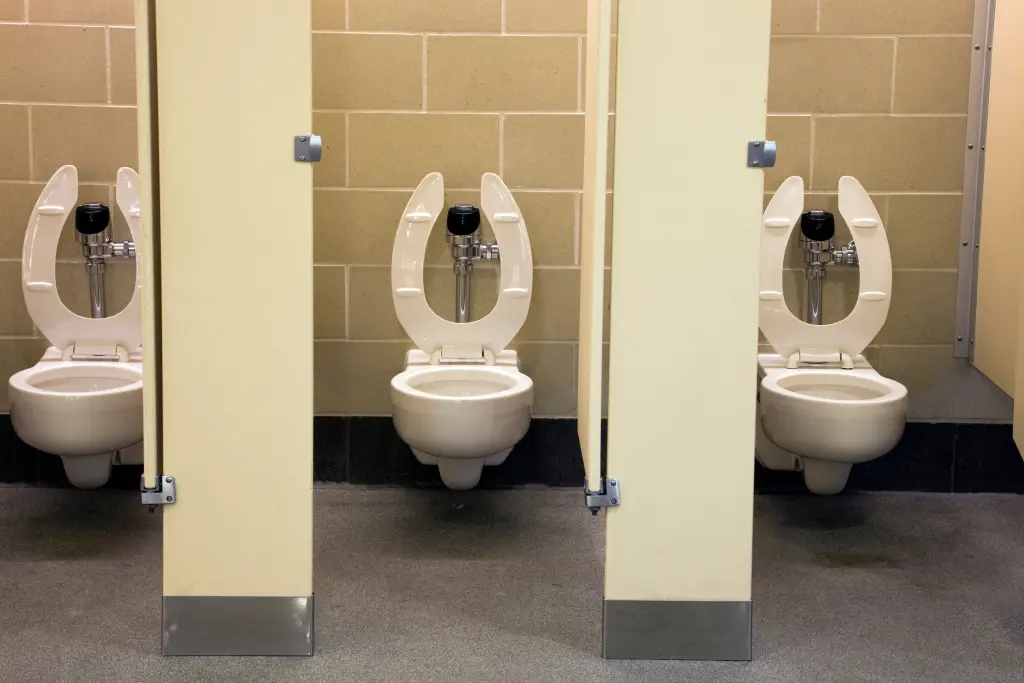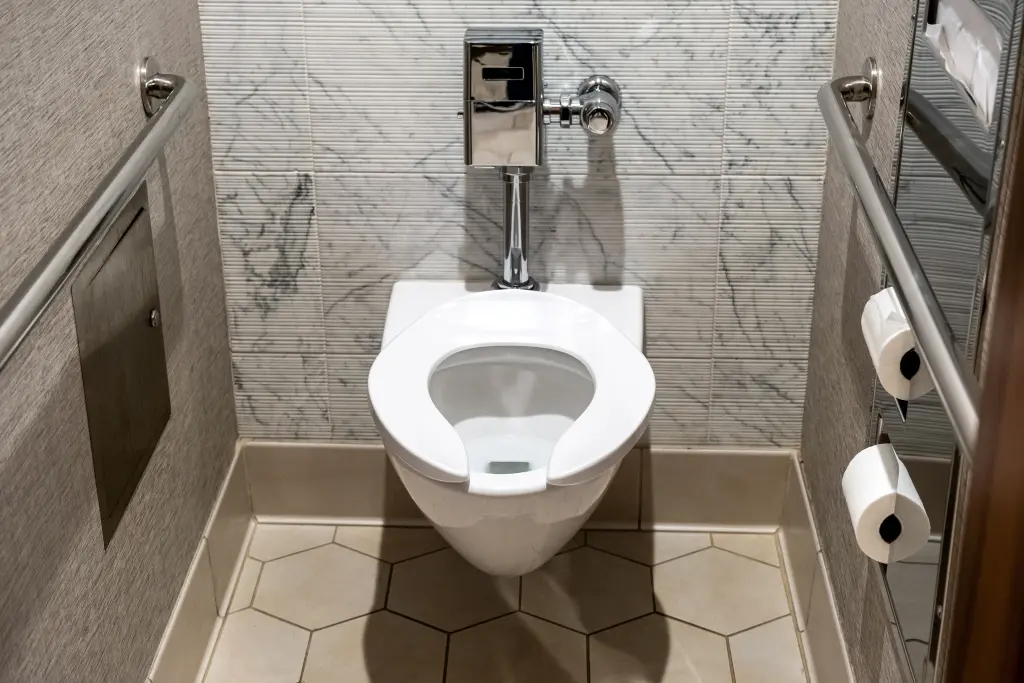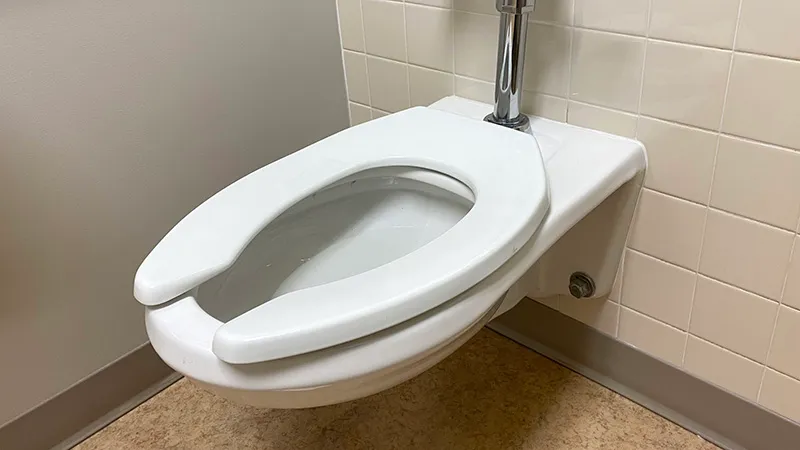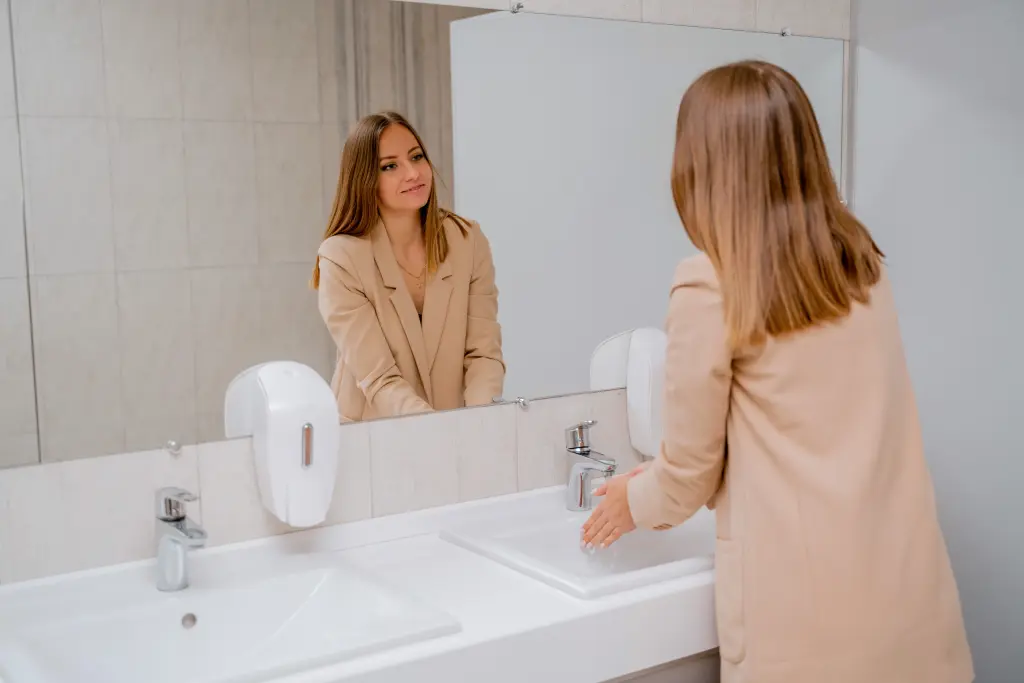Have you ever wondered why public restrooms typically have U-shaped, or “open front,” toilet seats? You might have assumed it’s just a quirky design choice, but there’s actually a practical purpose behind it. From hygiene to accessibility, these toilet seats offer benefits that traditional round or closed-front seats don’t.
In this article, we’ll uncover why open front toilet seats are the go-to choice in public restrooms and how they help enhance cleanliness, comfort, and even ease of use. So next time you find yourself using one, you’ll know exactly why it’s shaped the way it is.

Why Do Public Restrooms Use Open Front Toilet Seats?
1. Enhanced Hygiene
One of the primary reasons open front toilet seats are used in public restrooms is for hygiene. The open-front design minimizes the surface area, reducing the chances of skin contact with potentially contaminated areas. With a U-shaped seat, there’s less seat coverage near the front, which is where users are most likely to come in contact with bodily fluids.
According to the International Association of Plumbing and Mechanical Officials (IAPMO), this seat design is meant to reduce the risk of contamination from previous users. The gap at the front helps prevent direct contact with areas that may have been exposed to urine, reducing the transfer of bacteria and making the toilet a bit less intimidating to use.
2. Easier Access for Women’s Hygiene Needs
Another often-overlooked benefit of the open front design is that it provides easier access for women to use the restroom. The gap in the front allows women to wipe without having to lift or shift on the seat. This feature is especially helpful in public restrooms where space and cleanliness are top priorities.
The American Society of Plumbing Engineers notes that U-shaped seats were originally created with women’s hygiene needs in mind, allowing easier and more comfortable access while ensuring minimal contact with the toilet seat. This design choice highlights that sometimes, small modifications can make a significant difference in user comfort.
Additional Benefits of Open Front Toilet Seats
1. Reduces Splashing and Spillage
With an open front seat, there’s less likelihood of splash-back, which can happen when users attempt to “hover” over the seat to avoid direct contact. The gap provides space for better aiming and reduces splashing, helping to keep the seat itself cleaner.
This design helps minimize unpleasant messes left behind, particularly in high-traffic areas like public restrooms, where cleanliness is always a concern. An open front seat encourages proper positioning, which leads to a cleaner restroom for everyone.
2. Accommodates Various Body Shapes and Sizes
Public restrooms serve people of all shapes, sizes, and mobility levels, so it’s essential for toilet seats to accommodate diverse needs. The U-shaped seat can offer a more comfortable experience for a range of body types, as it provides extra room in the front.
For some, the open front design allows a better seating position, especially for those with physical disabilities or those who need additional space due to limited mobility. It’s a small adaptation that makes public toilets more accessible and user-friendly.

Open Front Seats and Plumbing Codes
Did you know that the use of open front seats in public restrooms is often required by plumbing codes? In many places, plumbing codes mandate that public restrooms either have U-shaped seats or provide automatic seat covers. This requirement is grounded in public health, aiming to create a sanitary restroom experience for everyone.
The IAPMO’s Uniform Plumbing Code explicitly states that public restrooms must include open front seats for sanitary reasons. While not all states enforce the same standards, many have adopted this code to promote cleanliness and reduce the spread of germs in public facilities.
How Open Front Seats Influence User Behavior
1. Encouraging Proper Seating
Many people attempt to avoid direct contact with public toilet seats by hovering over them. While this may seem like a sanitary option, hovering can actually lead to more issues. For example, hovering often causes urine to spray on the seat, which leaves an unpleasant mess for the next user.
Dr. Poonam Desai, a health expert, has explained in a viral video that hovering over a toilet seat can strain pelvic muscles and lead to an “incomplete emptying” of the bladder. She encourages women to use seat covers or to simply sit on the toilet seat to avoid strain. If everyone used the seats properly, the restroom would be cleaner and less risky for all users.

2. Reducing Unnecessary Anxiety Around Cleanliness
While many people are apprehensive about sitting on public toilet seats, the chances of contracting an illness from a toilet seat are actually quite low. The open front design minimizes direct contact, addressing some of the common concerns people have when using a public toilet. By promoting hygiene and reducing splash-back, these seats can make users feel a little more comfortable, even in less-than-ideal restroom conditions.
Common Misconceptions About Open Front Toilet Seats
1. It’s Not About Saving Material
One misconception is that open front toilet seats are used simply to save on materials. In reality, the cost savings between U-shaped and round seats is minimal. The design choice is driven by functionality rather than cost, as the open front seat fulfills specific hygiene and user-comfort purposes that standard seats cannot.
2. They Aren’t Less Durable
Another misconception is that open front seats are less durable. Open front seats are designed to withstand the same usage as round seats. They are made from durable materials, like plastic or wood, that can handle high foot traffic and frequent cleaning without breaking down.

Should You Use Open Front Seats at Home?
While U-shaped toilet seats are most commonly found in public restrooms, some people consider them for home use, especially if they prioritize cleanliness. However, closed front seats tend to be more popular for residential bathrooms due to aesthetic preferences and privacy.
In home environments where multiple people use the same restroom, such as in shared living spaces, an open front seat could add a level of cleanliness and ease similar to that of public restrooms. However, in private homes, closed seats remain the standard.
Conclusion: The Practical Benefits of Open Front Toilet Seats
Open front toilet seats serve an important role in public restrooms. They’re designed to promote hygiene, provide comfort, and enhance accessibility. From allowing easier access for women’s hygiene to reducing splash-back and making restrooms cleaner for everyone, these seats go beyond just being a quirky design choice—they’re a practical solution to common restroom concerns.
Next time you find yourself using a public restroom, take a moment to appreciate the simple, functional design of the open front toilet seat. It’s just another way thoughtful design can make everyday experiences a bit more comfortable and a lot more hygienic.


